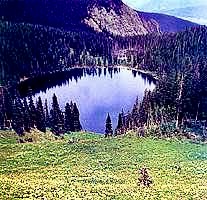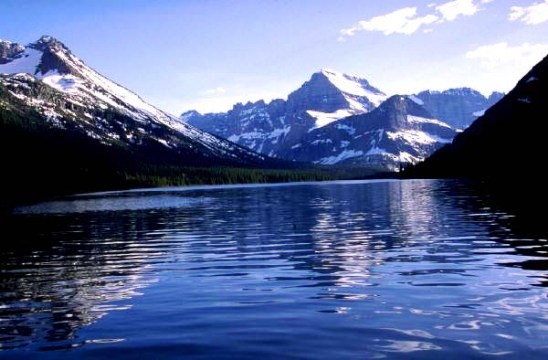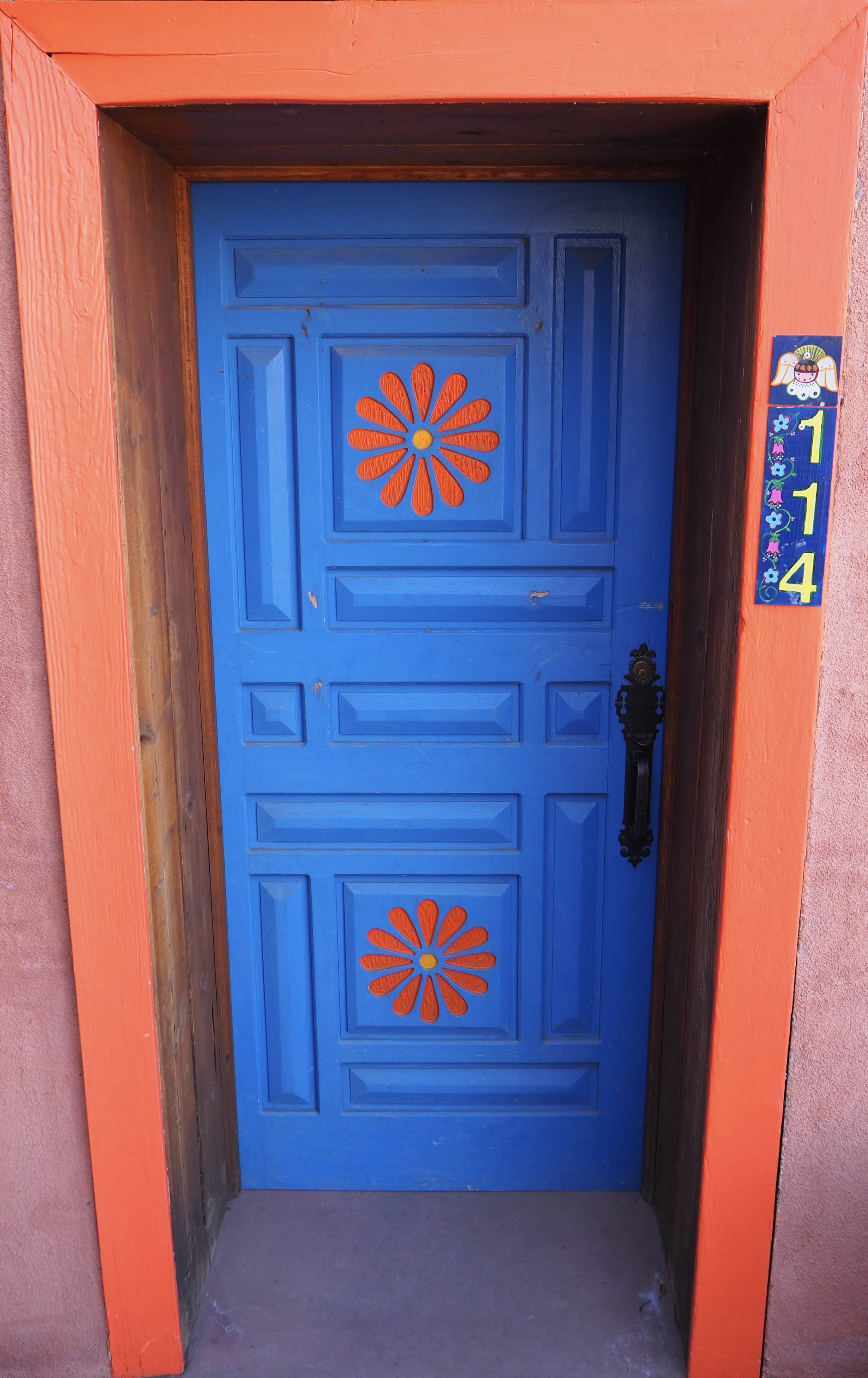


Walking down a street off the square in Taos, New Mexico, I noticed an adobe building with a colorful door set back off the sidewalk. The name, El Rincón, caught my eye because a friend in Colorado had mentioned buying interesting turquoise jewelry there. Opening the bright blue painted door, I didn’t immediately realize I was entering the domain of a family saga that began more than 100 years ago. But I would soon learn that the maverick who started it all was named Ralph Waldo Emerson Meyers.
On that afternoon, Estevan Castillo, grandson of Ralph Meyers, greeted me from behind an antique display cabinet. Estevan has dark, curly, gray-flecked-hair and a gentle, soft spoken demeanor. He is a musician, a talented silversmith jeweler, and the owner of El Rincón, known as the oldest trading post in Taos. More importantly, he is “Contador de historias”, the teller and keeper of family stories.





Old wooden display cases with deeply scratched glass countertops drew me in right away. Some were filled with vintage “pawn” turquoise and silver. My appreciation for one-of-a-kind jewelry art has roots in a small cottage business I started when we lived overseas. For several years, I designed and sold ethnic necklaces and earrings made from beads, stones, and silver collected around the world.


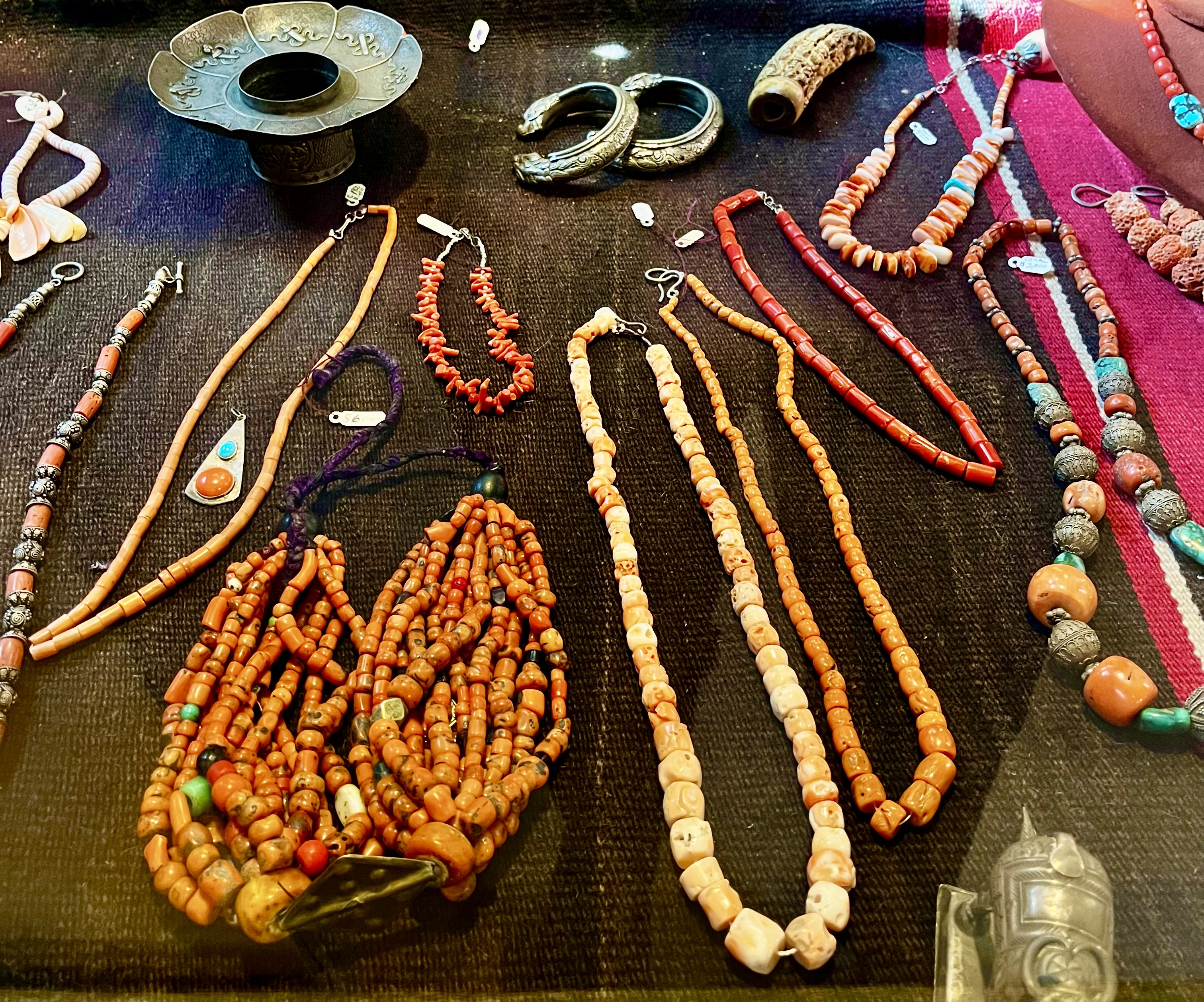


Questions I asked Estevan were answered with stories. About bead strands collected and worn by his grandmother Rowena Meyers, artifacts made by Indians in his grandfather’s time, a photo of Estevan in the shop as a boy cutting holes in silver beads, one of his grandmother’s buckskin dresses hanging on the wall. I wanted to know more.
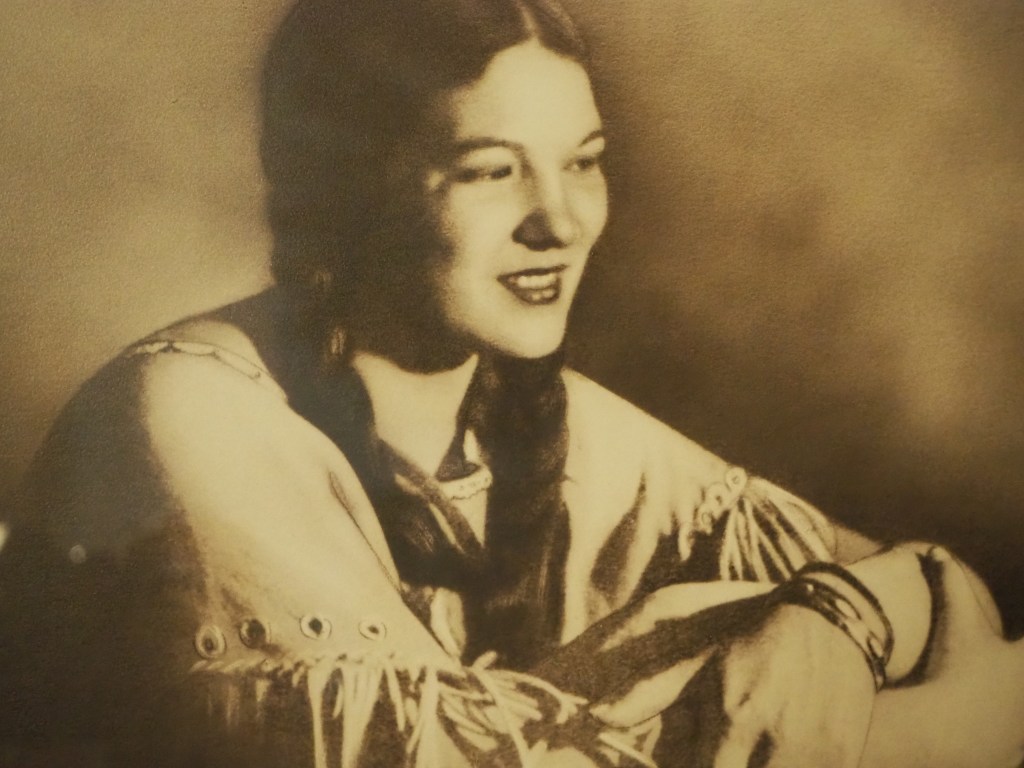




El Rincón first opened as the Mission Shop, an Indian curio store started by Ralph Meyers in the early part of the last century. Now it spans three generations. The evolution and survival of Taos’ oldest trading post is as remarkable as the museum quality Native American art and artifacts Meyers traded and sold. Some of his collections are now in the Smithsonian and Guggenheim Museums.
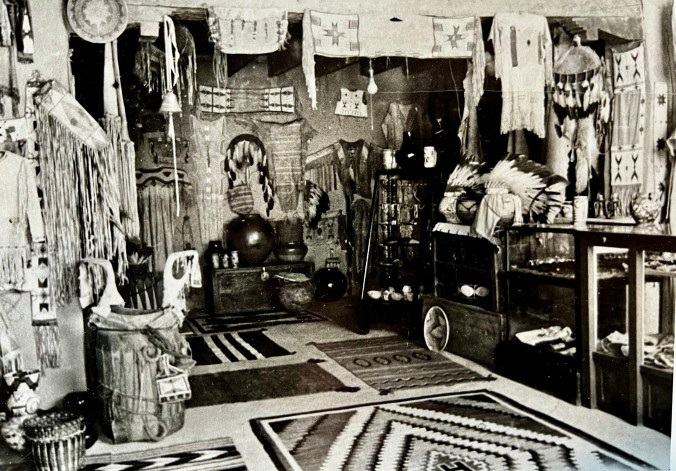
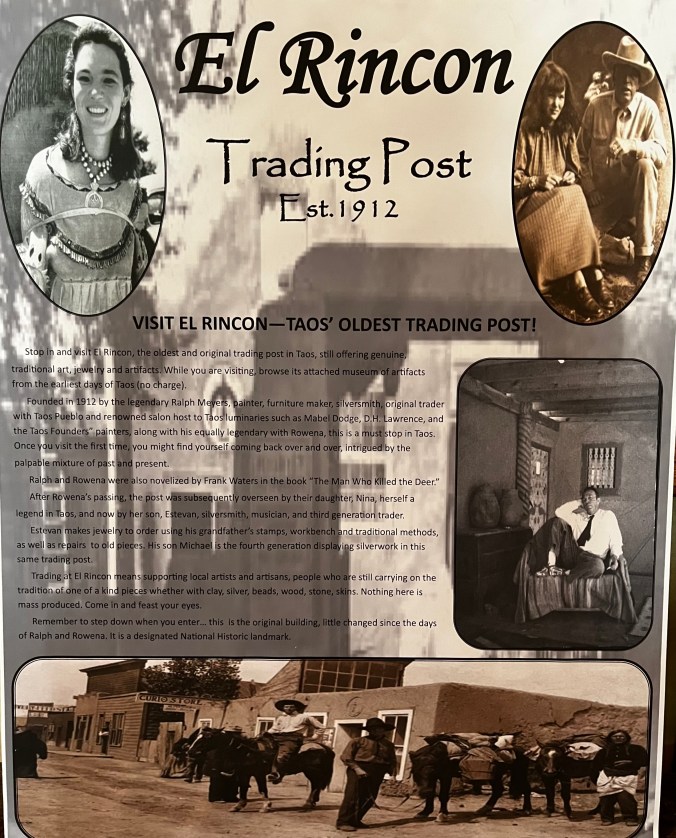
The history begins with a young man’s all-consuming passion to live his life in the “old west” of more than 100 years ago. And his desire to paint pictures of Indians. The history is best divided in two parts–during and after the life of Ralph Meyers.
PART ONE–The Ralph Meyers Years
Born in 1885, Ralph Waldo Emerson Meyers grew up in Denver, Colorado. He was a disinterested student and dropped out of school after third grade. But he was an avid learner with keen listening skills. He hung onto stories told by “old timers” of his era. Stories of Indians and rugged geographic beauty and remote life in the west. Even without formal art training, he wanted to make paintings of Indians in their environment. He talked easily to everyone which made him adept at turning relationships into friendships. And so, with a head full of stories, good communication skills, and an innate ability to teach himself anything, Meyers took off for rural New Mexico.
He worked as a fire guard for one year with the U.S. Forestry Service, stationed near Blue Lake, north of Taos. Blue Lake is sacred ceremonial ground for the Taos Pueblo Indians, worshiped as the source of life for the irrigation of their land. [See *End Notes]
Meyers lived a hermit’s life that year, but he connected personally with the Pueblo people and began trading with them. After several years of collecting Indian artifacts throughout the west and southwest he settled permanently in Taos, and the Mission Shop trading post opened for business.
Ralph Meyers was an outlier. He was the first white man to make social and professional relationships with the secluded Pueblo-dwelling Indians around Taos. Initially, the trading post highlighted Native American pottery, rugs, jewelry, baskets, buckskin, moccasins, and ceremonial beadwork. Then, as a self-taught oil painter, Meyers began displaying his own work. He was part of the emerging artist colony of Taos in the 1920s and ‘30s. Other creative people arrived–painters, photographers, and writers. Many were captivated by the beauty of the landscape, the simple unhurried pace of life, and they stayed.



He was drawn into the close circle of friends that wealthy New York art patron Mabel Dodge Luhan brought to the area–painter Georgia O’Keefe, writer D.H. Lawrence, photographer Ansel Adams, heiress and jewelry designer Millicent Rogers, Russian emigré and portrait painter Nicolai Fechin. Hollywood actors, musicians, and other artists cycled through Taos. Ralph Meyers knew them all. His ability to sustain trusted friendships across Indian and Spanish-American cultures, socio-economic status, gender, and notoriety contributed to his stature as a leading citizen.



Ralph Meyers was a mountain guide, business entrepreneur, and a Renaissance man of his generation. By observing other artists, he taught himself to oil paint. He learned to be a skilled silversmith, made his own tools, and created beautiful jewelry. He took up furniture making and wood carving in the Spanish colonial style. He taught himself leather working and beading. He learned to spin, dye, and weave wool blankets in the traditional ways. He trained and hired Indians to make jewelry, hand-bead moccasins, buckskin garments, and ceremonial ornaments in his shop. They were paid fair market prices which further engendered loyalty.



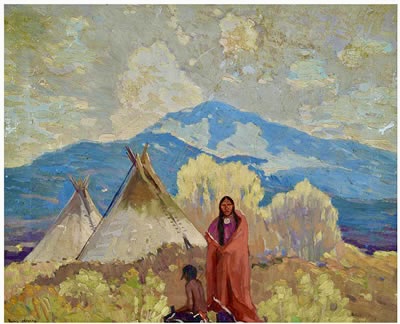
Then came family life. Rowena Matteson, born in Pennsylvania in 1909, moved to the Taos area as a child. She was engaged to an employee in The Mission Shop while she was a teenager. That relationship faded and another bloomed. Rowena married Ralph Meyers in 1933. He was 48. She was 24. Two children were born. Daughter Nina and son Ouray became artist/painters.
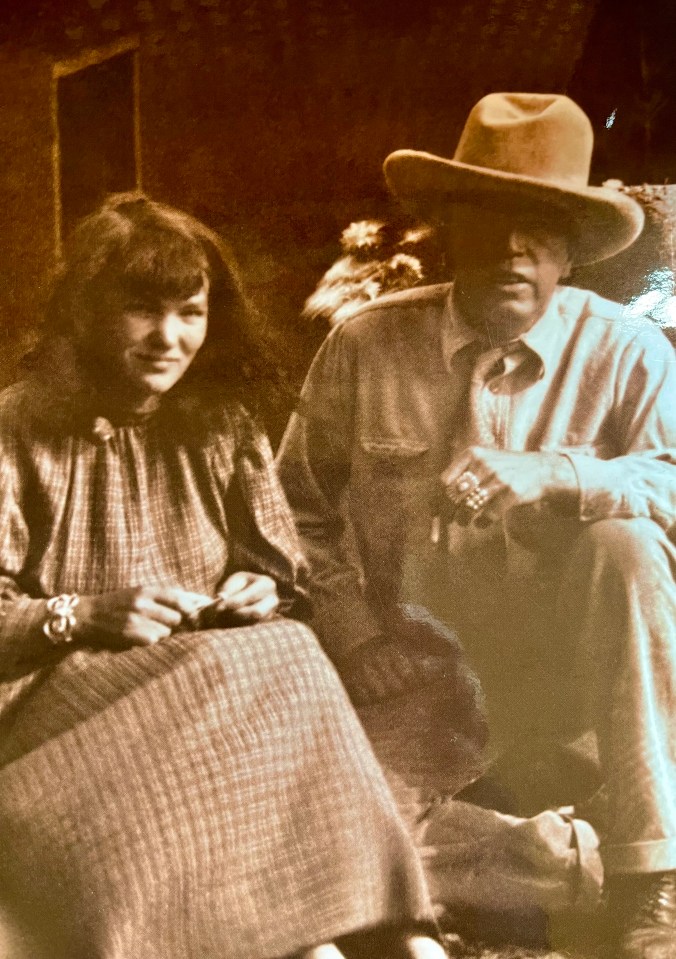



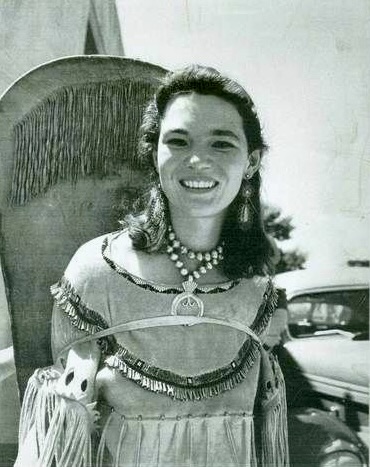
A rattlesnake bite through his thumbnail was the beginning of Meyers’ demise. He saw what he thought was a dead snake hanging in a tree and began swinging it around to entertain friends. It doubled back and bit him. There was no anti-venom treatment. After a debilitating infection and illness he died in 1948 at the age of 63.
For more than 36 years Ralph Meyers was a trusted icon in Taos and Pueblo communities. He was introspective with an extrovert’s personality. He had demons too. Mainly alcohol, which fueled angry and sometimes destructive behavior. One night, under the influence of whiskey, he took 30 of his paintings and set them on fire.
He loved his children but was self-absorbed by an extreme need to create or build or paint something every day. He was not remembered as a nurturing father. Rowena filled the gap.
Ralph Waldo Emerson Meyers was an unconventional man who loved Native American culture as an outsider but found his way inside the New Mexican Pueblo community. An original western icon who listened, learned, and bridged cultures with a legacy lasting long after a snake bite.
PART TWO–The Mission Shop becomes El Rincón
After Meyers’ death, Rowena closed the trading post, moved away, and leased the space to The Taos Bookshop for the next twenty years.
She returned in 1970, in a second marriage with another son, and moved into a house behind The Taos Bookshop. There she opened El Rincón [“the hidden corner”, in Spanish] to showcase jewelry, costumes, and artifacts acquired from continued trading. When the bookstore owners vacated the trading post building, Rowena moved back into the larger space and added a museum. The name El Rincón remained.
Eventually Rowena’s home became La Doña Luz Inn, a bed and breakfast started with daughter Nina in 1985. The building has been extensively renovated with new additions designed and built by Paco Castillo, Nina’s middle son. When Nina died in 2007, La Doña Luz was Paco’s inheritance. Nina’s vivid paintings can be seen throughout the inn in the form of colorful folk art kitchen cabinets, bathroom murals, and kiva fireplace surrounds. It’s a lovely historic building, rich in family art and creativity.





Oldest son of Nina, Miguel Castillo, owns the part of Ralph and Rowena’s homestead that was attached to the trading post. The front rooms were once a restaurant, also called La Doña Luz. With Ralph serving as chef, their dinner parties with other artists and guests were legendary and raucous, lasting long into the night. Now renovated, these rooms and former living quarters house boutique shops.
When I first walked into El Rincón, it felt like living history in every direction. There were relics and heirlooms and stories everywhere, hanging from the ceiling, tacked to the walls, or loaded into display cases. Shelves with dusty pottery and baskets. Concho belts, bolo ties, strings of beads, necklaces, bracelets, earrings, and rings, vintage and new silver and turquoise. A back room piled with artifacts, too many to absorb.





Over my several visits to Taos, Estevan has been a generous “Contador” of his family’s stories. Often, we talked in his workshop where strong natural light pours in the big windows with a view toward his brother’s Inn. Jewelry making tools, silver, stones, and unfinished projects cover the workbench. There are cans and containers of beads and silver lining a high shelf along one wall.




Estevan Castillo is a nostalgic man. He remembers Rowena sitting on her chair in the late afternoon talking to Indian traders and customers while sipping a beer. He knew that his mother Nina was driven by a consuming need to paint every day. Just like her father. He is proud of the history and contributions of the ancestors who preceded him. He understands artistry, creation, and relationships founded on trust. Estevan knows devastation from tragic accidental deaths of his uncle and cousins. He has lived the bittersweet blessings of caretaking his grandmother and mother as they faded and died.
Today, Estevan preserves the legacy that began in the Mission Shop and continues in El Rincón. His stories are vivid. And like the grandfather he never knew, he can talk to anyone. In the worn adobe walls, darkly stained wooden beams, and eclectic collection of artifacts there are layers on layers of stories. Ask a question or wonder about Taos history and the oldest trading post from 100+ years ago, then be ready for where Estevan’s stories take you.
*END NOTES:
Facts About the Taos Pueblo
- Taos means “Place of Red Willows” and the Indians of the Taos Pueblo are the Red Willow People, from the pre-Hispanic period in north America. There are 19 Pueblo communities in New Mexico. The Taos Pueblo is the only Native American community designated both as a UNESCO World Heritage Site and as a National Historic Landmark.

- Taos Pueblo is north of the town of Taos, located under Pueblo Peak [12,300 ft. elevation] in the Taos Mountain Range, which is part of the North American Rocky Mountains, specifically the Southern Rockies in the Sangre de Cristo Range. A tributary of the Rio Grande River runs through the property and provides running water and irrigation.

- The multi-storied adobe dwellings [made of mud, clay, water, and straw] of the Taos Pueblo are unique to this geography and have been inhabited for more than 1000 years, due to a determined Native American community. It is the only World Heritage site cited for its significance as a living Native American culture.

- There is no inside running water or electricity in the Pueblo. In the beginning, the dwellings had no windows or doors and were entered by climbing a long ladder through a hole in the roof. That has changed. Most residents live outside of the walls for much of the year. They return for sacred ceremonies and for tourism before Covid 19 arrived. The Pueblo has been closed for two years and there is no current plan to re-open.
- Preservation of the buildings is a priority for trained community members. The sun-dried mud brick is annually restored with a new coat of adobe plaster using both traditional and modern construction techniques. This occurs as part of a tribal ceremony.
- In 1970, President Richard Nixon signed a law returning 48,000 acres to the Pueblo Indians. This included Blue Lake, where Ralph Meyers was once a fire ranger. It was worshipped as a water source, is sacred land, and off limits to outsiders. The law provided a new safeguard to the water supply, natural resources, and the welfare of the Pueblo. The land is now secure for all social and cultural events.

- El Rincón Trading Post
- 114 Kit Carson Rd.
- Taos, NM. 87571
- Tel: 575-758-9188
